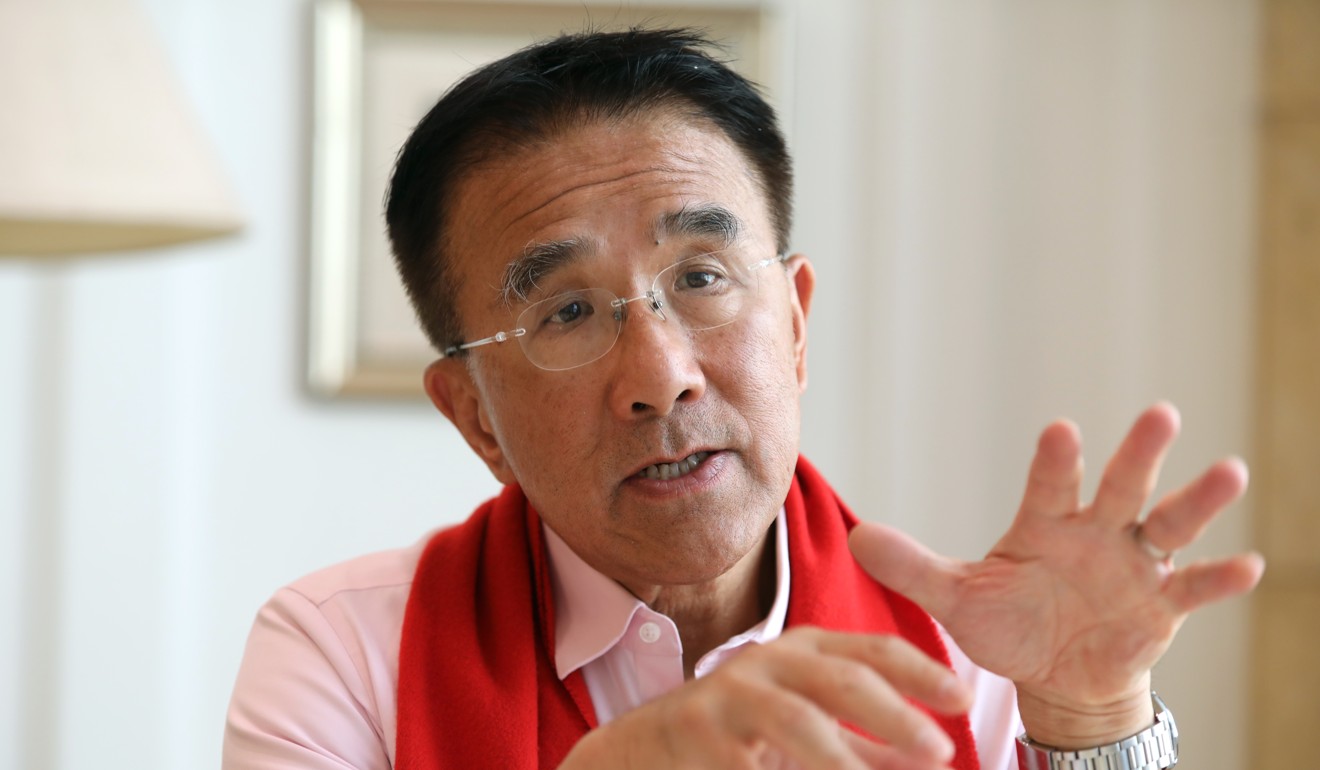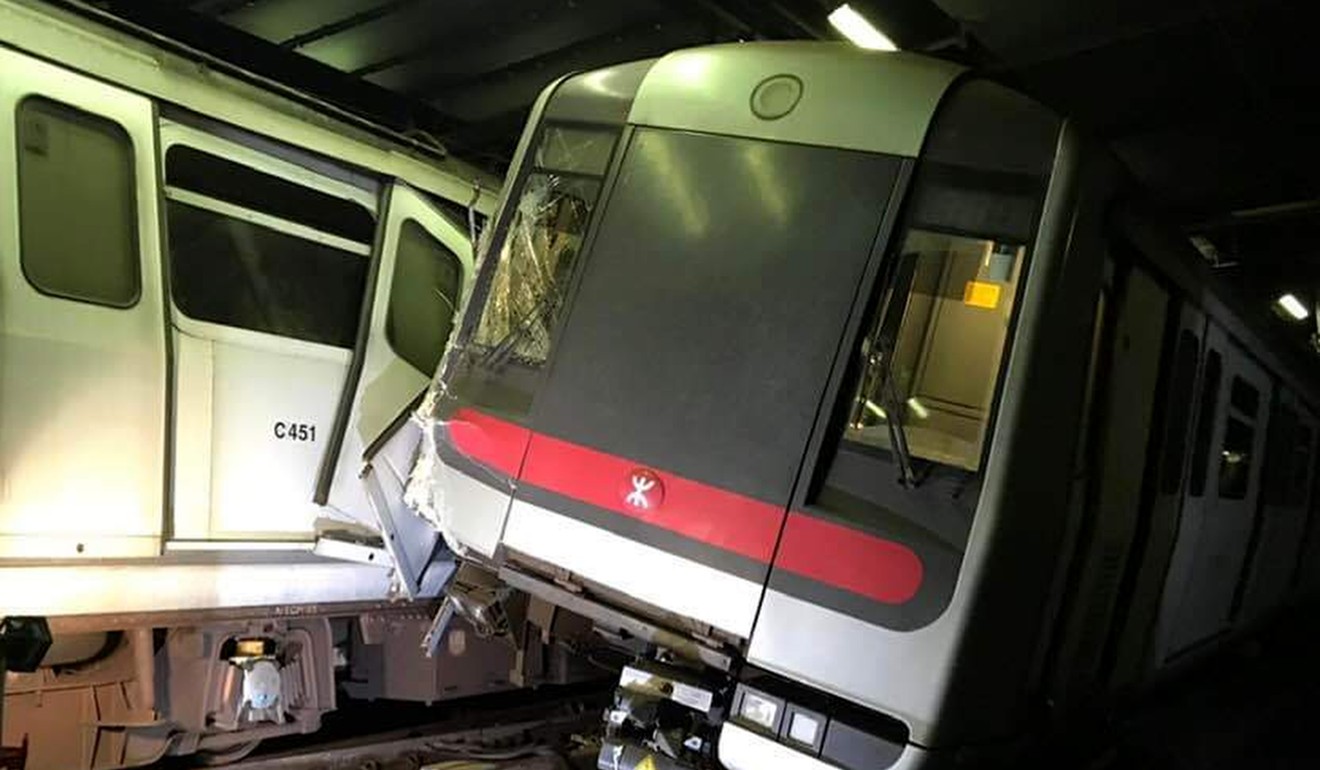
MTR Corp crossroads: Hong Kong rail giant mulls scrapping second backup of signal system blamed for collision
- Michael Tien says MTR having second thoughts about extra backup for the new HK$3.3 billion signalling system
- Cost of repairs for trains in Monday’s collision said to be at least HK$30 million

Hong Kong’s embattled MTR Corporation faces a quandary over whether to abandon a specially designed backup of its new signalling system after last week’s embarrassing train collision, the Post has learned.
Michael Tien Puk-sun, a lawmaker and former railway boss, said on Friday he had learned from inside sources that the MTR Corp was caught in a dilemma between keeping the cutting-edge technology – which comes with risks – or settling for the industry standard signalling system.
“The MTR Corp hopes to be the world leader in rail services. When they commissioned the new signalling system, rail bosses specifically requested software supplier Thales to design a second backup for Hong Kong’s rail lines,” he said.
The crash in question happened at about 3am on Monday when two trains collided at a crossover junction near Central station during an overnight trial of the new signalling system. One carriage was derailed, injuring a driver, but no passengers were on board.

The result was an unprecedented two-day service breakdown between Admiralty and Central on the Tsuen Wan Line. The wreckage was finally cleaned up over the weekend.
Tien said he was told the cost of the repairs for the two trains was between HK$30 million and HK$50 million (US$6.4 million).
An MTR source confirmed that management was considering whether to give up the second backup because of safety risks.
The source said: “Actually, the second backup is totally unnecessary and a waste of money. One backup system is already enough to cope with any failures from the main system and for it to automatically switch back to that after repairs are done.
Actually, the second backup is totally unnecessary and a waste of money
“The whole concept about the second backup is really meaningless. If the MTR Corp pursues 100 per cent reliability from the signalling system, does it mean that it should create the 10th backup system?”
Lam Wai-keung, chairman of the Hong Kong Federation of Railway Trade Unions, said the rail firm needed to seriously consider whether to go ahead with the second backup.
“Safety is the most important thing. I have no opinion about the second backup as long as the company can confirm from the supplier that it is safe to use and proven by a large number of tests,” he said.
But Lam said if the rail company eventually decided to drop the second backup, its technical team had to conduct the on-site tests all over again.
“This will definitely delay the whole process of the signalling system upgrade for the seven rail lines by at least one year. Time is also a factor,” he said.
Tien, a former chairman of the KCR Corporation, said a standard rail industry signalling system only covers the main system with one backup.
“This second backup is uniquely designed for Hong Kong. You won’t find it anywhere else in the world. The good thing about this is it reduces failure rates from once every one or two years to only once every 10 years,” he said.
“In other words, the MTR Corp hopes to be the pioneer in rail services with cutting-edge technology.”
Even so, Tien said he had spoken to MTR managers who were having second thoughts about the second backup of the new HK$3.3 billion (US$420.4 million) signalling system after Monday’s collision.
“This is the dilemma. If the MTR wants to be a world leader in rail services, it needs to take risks and invest more. But if it settles for the standard system with only one backup, it can’t be a railway pioneer,” he said.
“I told the management my best advice for them was to put this matter to the board or consult the public.”

The rail giant said the collision occurred during tests that simulated a switch to the second backup in a scenario in which the main system and the first backup systems both failed.
MTR bosses had suggested the crash was caused by a software flaw in the new signalling system, resulting in the two trains being assigned the same crossing, which they said was “unacceptable”. The software supplier is French multinational Thales.
Tien said a dispute had erupted between both sides over responsibility. The MTR Corp blamed Thales for failing to test the particular scenario that was used in the trial run.
Amaury Jourdan, vice-president for Thales’ technical and transport activity, insisted there was nothing wrong with the design of the software. He said the issue was related to the “redundancy architecture” of the Hong Kong system.
The MTR Corp said it was studying a preliminary report submitted by Thales about the incident and that it would be referred to its investigation panel.